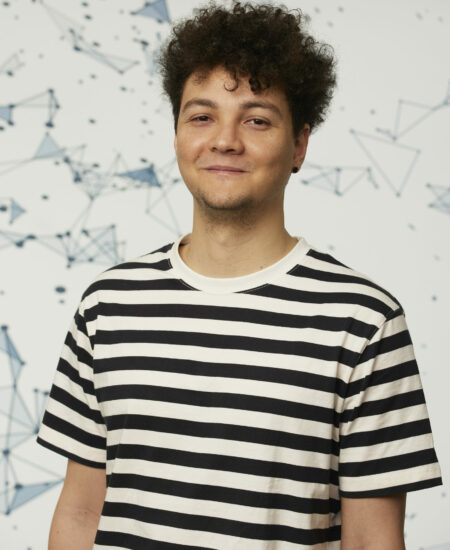IMDEA Networks


Dr. Orlando E. MARTÍNEZ-DURIVE
Investigador Postdoc
- Fecha de graduación: Jul 2025
- Afiliación: IMDEA Networks Institute
- BSc: Ciencia de la Computación - Universidad de la Habana. La Habana, Cuba
- MSc: Ciencia de la Computación - Universidad de la Habana. La Habana, Cuba
- PhD: Telemática - Universidad Carlos III de Madrid. Madrid, España
- BSc. Tesis: Secuencias binarias de baja autocorrelación exploradas usando algoritmos de propagación de mensajes
- MSc. Tesis: Sistema para el análisis de la movilidad humana en Cuba a través de datos de telefonía celular
- Tesis doctoral: Understanding Societal Phenomena and Network Operations with Mobile Metadata
- Supervisor de tesis: Dr. Marco FIORE
- Puesto anterior: Investigador en Facultad de Física, Universidad de La Habana, Cuba
- Fecha de incorporación: Noviembre 2020
- Email: orlando.martinezimdea.org
Biografía
I am a Research Assistant in the Networks Data Science Group at IMDEA Networks Institute, pursuing a Ph.D. in Telematics Engineering at UC3M. I enjoy Data Science, Big Data, Remote Sensing, Python, Combinatorial optimization, coding, writing, and reading exciting papers.
I like to be part of the community, and that makes me participate as TPC for PAM 2025, TPC shadow in IMC 22, and 1st IEEE Workshop on
Quality of Data in Network Telemetry and review works for venues like:
- Sustainable Cities and Society Complex Networks 2021
- IFIP Networking 2021 & 2022
- International Symposium on Personal, Indoor, and Mobile Radio Coms. (PIMRC) 2022
- Network Traffic Measurement and Analysis Conference (TMA) 2022
- Journal of Maps (2022)
In addition, I helped organize conferences such as PAM 2023 and Netmob 2023, and I participated in the Madrid Science Fairs of 2023 and 2024.
Some of my work has appeared in IEEE INFOCOM (x2), IEEE SECON (x2), ACM IMC, and IEEE/IFIP TMA.
The following projects have funded me:
Attraction of research talent. NetSense; by Madrid Community and Mobility data for epidemiology based on mobile telephony by PAHO/WHO
I’m currently visiting the Network Science Institute at Northeastern University in Boston. I previously did a one-plus-year internship at Telefónica Innovación Digital under the supervision of Andra Lutu and Marco Fiore.
Proyectos de investigación
NetSense+1
Atracción del Talento - Ampliación por un año
Más informaciónarrow_right_alt
Publicaciones
Modeling Base Station Metadata Geolocation (Poster)
Orlando E. Martínez-Durive, Stefanos Bakirtzis, Cezary Ziemlicki, Marco Fiore
Netmob 25. Paris, France. Octubre 2025
Understanding Societal Phenomena and Network Operations with Mobile Metadata (PhD)
Orlando E. Martínez-Durive
pp. 212 , Julio 2025
Demonstrating Deep Learning-based Spatial Diffusion (Demo)
Orlando E. Martínez-Durive, Stefanos Sotirios Bakirtzis, Cezary Ziemlicki, Marco Fiore
IEEE Conference on Computer Communications Workshops. London, United Kingdom. Mayo 2025
An Evaluation of RAN Sustainability Strategies in Production Networks
Orlando E. Martínez-Durive, José Suárez-Varela, Jesús Omaña Iglesias, Andra Lutu, Marco Fiore
IEEE International Conference on Computer Communications. London, United Kingdom. Diciembre 2024
Characterizing, Modeling and Exploiting the Mobile Demand Footprint of Large Public Protests
André Zanella, Diego Madariaga, Sachit Mishra, Orlando E. Martínez-Durive, Zbigniew Smoreda, Marco Fiore
Internet Measurement Conference. Madrid, Spain. Noviembre 2024
Publicaciones previas
-
Intra-day Population Fluxes from Mobile Phone Data in Havana, Cubacall_made
.
For the first time in Cuba, we use Location Update records from the mobile phone network to generate origin-destination matrices in Havana. We used 15-days telecom anonymized data from 2020 to approximate trips identified as sequences of cellphone towers. We projected these trips over transport areas and municipalities, and showed the plausibility of the fluxes by comparing it with known behaviour of the city and data from census and work-home survey.
-
Low Auto-Correlation Binary Sequences Explored using Warning Propagationcall_made
.
The search for binary sequences with low auto-correlations (LABS) is a computationally hard discrete combinatorial optimization problem. We explore two physically inspired algorithms to explore the low energy space of this model. The greedy, T = 0, Monte Carlo (MC) method gets trapped in the exponentially many 1-Spin-Flip stable configurations, that are typically low in energy, but still far from the global optimum. The more elaborated Warning Propagation (WP) algorithm also gets trapped in local minima. However, these local minima, are more stable to spin flips than the ones obtained by the greedy MC. We also compare the behavior of both algorithms in randomized versions of LABS, showing that the low energy space of the 4-Spin model is easier to explore than the one of LABS.
-
La Habana: Atlas de la COVID-19call_made
.
Los geógrafos han concertado esfuerzos con epidemiólogos, matemáticos, especialistas en ciencias de la computación, físicos, demógrafos… para conformar una obra cartográfica inusual, marcada justamente por la mirada multi- y transdisciplinar, con un enfoque espacio-temporal de la epidemia en La Habana, epicentro casi sostenido de la enfermedad en Cuba. La elevada conectividad entre todos los territorios que integran la provincia se convierte en factor de potencial trasmisión del virus; de ahí la mirada diferenciada a la que hay que recurrir y que de alguna manera se presenta en este texto.
-
Ciencia e innovación: desafíos a la multidisciplinariedad ante la COVID-19call_made
.
Primera mirada al aporte de ciencia e innovación de la Universidad de La Habana al enfrentamiento a la COVID-19 desde una perspectiva multidisciplinar. […] El volumen que presentamos no implica el cierre de un proceso, sino el balance del trabajo realizado en un período inicial, en medio de la fragua continua de estos tiempos. Lo anima la propia vocación de servicio de sus autores: poner al acceso público, sin dilaciones, la obra investigativa e innovadora que se ha ido gestando para que fructifique, para que se convierta en conocimiento compartido, apropiación de un saber y una experiencia a emplear, incluso, más allá de las fronteras nacionales. Plasmar la germinación pronta, desatendiendo la ponderación sabia que permite la distancia crítica, es imperativo en estos momentos. Aquí quedan las huellas de la incertidumbre con que grava la epidemia; de la incompletitud en el desentrañamiento de la operatoria del SARS-CoV-2 y de la enfermedad que produce; del empleo de información estadística que no ha pasado por los «reparos» de rigor en las bases de datos… pero está la fuerza de una ciencia y una innovación de altísima profesionalidad, que también deja referentes en lo concerniente a experiencia, metodologías y sistemas de conocimientos, de validez presente y futura. Queda, asimismo, la construcción de una memoria, de tanta importancia para la propia ciencia, para la Universidad y la educación superior en general, y para la nación.
Noticias
- Talking about BGP issues 🚫 in RIPE 91 🇷🇴
- Best poster award 🥇 in NetMob 2025 🇫🇷!!
- Joining NetAI as ML Researcher 🤖!
- I completed my PhD 🎓🎓!
- 🎉 An Evaluation of RAN Sustainability Strategies... was accepted and presented at Infocom in London 🇬🇧
- I'm joining as a research intern at Cisco ThousandEyes 🤓
- Hands-on AI and Mobile Systems in Como, Italy 🇮🇹
- See you soon Boston 🥹! I finished my internship at The Network Science Institute 🇺🇸.
- Yeeiii, "An Evaluation of RAN Sustainability Strategies in Production Networks" was accepted in INFOCOM 2025.
- 🎉 SIGSPATIAL in Atlanta - Uncovering Latent Patterns in Service-Level Spatiotemporal Mobile Traffic 🎉
- 🎉 DeepMend accepted at SECON 2024
- 🎉 Paper accepted at IMC 2024 🎉
- jksadjkasd
- I finished my internship at Telefónica Innovación Digital.
- Workshop at the Centre Tecnològic de Telecomunicacions de Catalunya.
- 🎉 Characterizing 5G Adoption... was accepted at INFCOM 2024 🎉
- NetMob 2023 at the UC3M in Madrid
- 🎉 France Through the Lens of Mobile Traffic Data at TMA in Naples, Italy 🇮🇹
- Announcing the NetMob 2023 Data Challenge 💻
- 🎉 Impact of Later-Stages COVID-19 ... was accepted at INFCOM 2022 🎉
- 🎉 VoronoiBoost accepted at SECON 2022 🎉

